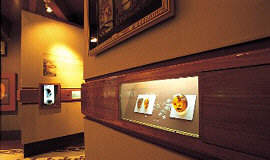 DOMINICAN AMBAR DOMINICAN AMBAR |
One of the written guides used by Columbus in his voyage of discovery to the Americas was that produced by Marco Polo. In it, Marco Polo explained how struck he was by the carved amber he saw at the Court of Kublai Khan.
Columbus, who was himself seeking the same Eastern lands as Marco Polo, paid great attention to the natural resources of the New Continent.
'He remained there for some days and discovered that this land produces gold, cotton…amber of green color, and an abundance of other commodities esteemed as precious among us.'
The oldest existing sample of amber, worked by man in this country, is a pair of ear ornaments from the Taino culture, objects fashioned in the form of an elongated cone, actually on exhibition in the Museum of Dominican Mankind in Santo Domingo.
The first commercial and industrial efforts were carried out by Dr. Pompilio Brouwer who excavated the mine of Pico Diego de Ocampo, near Palo Alto (Santiago).
The Dominican Republic is one of the few countries of the world producing Amber, fossil resin produced by prehistoric plants. Of different tones of color, it is greatly appreciated by craftsmen designing: necklaces, bracelets, cuff links, pins, etc. Amber is highly valued when it contains incrustations of insects or plants.
| 
 The Museum of Ambar in Puerto Plata The Museum of Ambar in Puerto Plata |
If you are interested in more information or acquiring fine pieces of Dominican amber, contact the World of Amber Museum via email at: m.ambar@codetel.net.do
 Amber mines Amber mines |
There are many amber mines in the Eastern and Northern regions of the Dominican Republic. The Eastern ones are found in gray sands, clays and lignite of the Miocene period (20-15 million years). The Northern ones are in sandstone, conglomerates, clays and thin layered lignite of the Upper Oligocene to Miocene period (25-15 million years).
Amber is extracted from mountains and valleys, at a height from up to more than 1000 meters on sea level.
|

